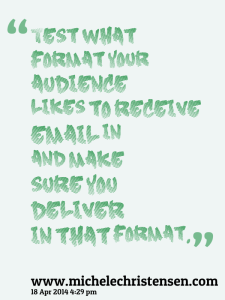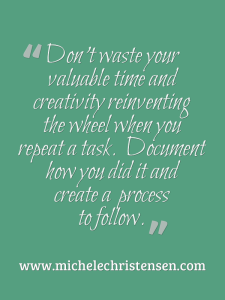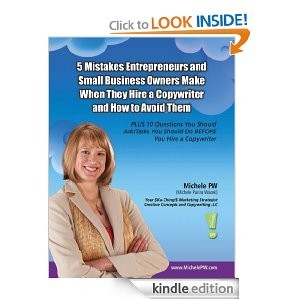 How many social sites do you use to promote your business? Whatever your number is, it may be too many.
How many social sites do you use to promote your business? Whatever your number is, it may be too many.
It’s easy to get on so many sites that you don’t have the time to do any of them properly. That’s what I mean by being spread too thin. The entire point of using social media for your business is to get results, and you need to put in enough time on each site to produce results. If you aren’t putting in the minimum amount of time on each site to generate results, you are getting very little value for the time you do spend. Sure, there is a small amount of value to just being on a site, but the where the big value lies is in getting to that critical point where you are doing enough to help your business.
How does this happen? How do smart, successful business owners end up madly trying to keep their social sites updated? Each day, a different people will tell you that you have to be on certain social sites or risk business death. It can be scary when to hear this, and so the natural inclination is to rush in and get on whatever that site is. That’s how you get spread too thin.
So how do you decide which sites to be on, robustly and fully, and which sites to ignore for now?
The first, and best answer is to test what works for your business. Every business, business owner and community is different. What works great for someone else may not work great for you. The only way to know for sure about any business tactic is to set some goals and test how well the tactic you are trying performs. Know what it is you are trying to achieve from your social media efforts – is it traffic to your site? Sales? Awareness? Once you know what you want to achieve you can measure if it’s working.
Aside from measuring your results, it’s important to consider which sites feel most natural to you. Which site or sites do you just love being on? Which ones feel more like play than work? Which fit what you sell? If you can find the ones that fit your personality, you are more likely to keep them up.
It’s also important to look at bigger trends you hear from lots of sources with data, not just what somebody says. If one person says a social site is hot or that it’s dead, I might notice and tuck that statement away for further analysis. However, if I hear the same statement over and over from a variety of sources and those sources are supporting their claim with data, now they have my attention. One person saying something doesn’t make it a fact, but lots of people supporting the same idea with data make that idea much more worthy of consideration.
A final, but equally important factor in picking social sites is where your customers are. Instead of trying to drag the right people to the site you are on, find out where you potential customers tend to hang out and go there. You won’t reach any of your social media goals if your content is in front of the wrong people.
Figure out the few social site where you need to be, and then do them right! Stop scattering your energy so widely that you get no results.
As for my business, Pinterest is working great right now! I’m getting high quality traffic to my site from Pinterest, and that means the visitors stay for a while and view more pages while there. If you think Pinterest might be good for your solopreneur business, join me on this free training with Becky Sangha, creator of Business Marketing With Pinterest. You’ll find out how to get traffic and increase your earnings by using Pinterest, and how Pinterest can be used by a variety of different businesses. If time is short like it is for most solopreneurs, you’ll love her “10 minutes per week” strategy (that’s not a typo, she really has a strategy that works in just 10 minutes per week!).
Get details and register for the free training here
 Today I’m a guest poster on the Coaching Confidence Blog. My topic is on narrowing your focus in order to be more successful. I see so many solopreneurs who are doing far too much to actually be successful. When you are spread so thin, you can’t really gain expertise in any given area and it’s hard to actually put enough time into any area for it to be successful. I’ve spent a lot of time this year seeing what I can get rid of while improving my bottom line. The answer is, quite a lot!
Today I’m a guest poster on the Coaching Confidence Blog. My topic is on narrowing your focus in order to be more successful. I see so many solopreneurs who are doing far too much to actually be successful. When you are spread so thin, you can’t really gain expertise in any given area and it’s hard to actually put enough time into any area for it to be successful. I’ve spent a lot of time this year seeing what I can get rid of while improving my bottom line. The answer is, quite a lot!







